Do you have wrinkled leather seats in your car, truck, or SUV? You know that not only does it look ugly, but it can also reduce the value of your vehicle. Fortunately, there are some simple methods you can use to fix those wrinkles and make your vehicle’s interior look new again.
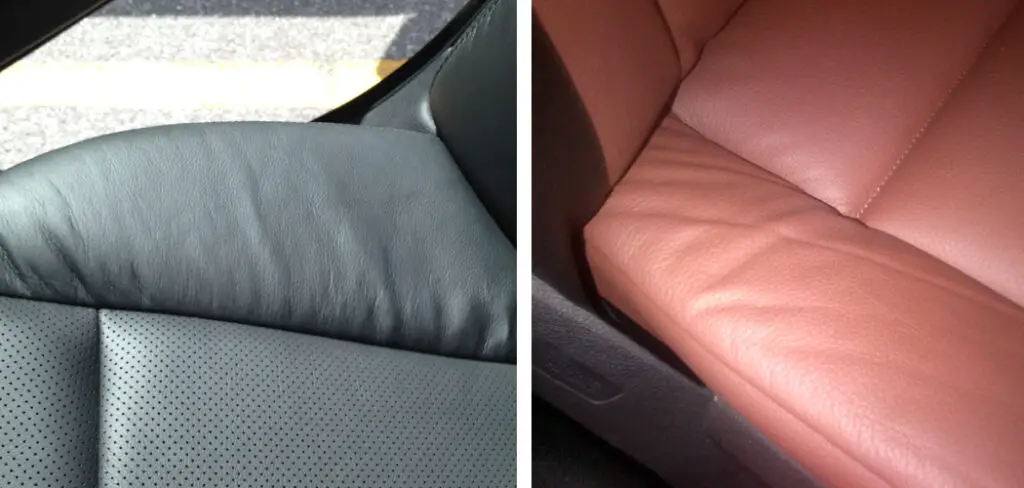
In this blog post we’ll cover how to fix wrinkled leather seats, so you don’t have to deal with this issue again in the future. Read on to learn more!
What Causes Leather to Wrinkle?
Leather is a natural material, so it’s prone to wrinkles over time. This is especially true in areas that are frequently used — such as car seats and furniture — because the leather fibers stretch out with use. Another factor that can contribute to wrinkled leather is exposure to the sun or other sources of heat, which cause the leather to dry out and become stiff, resulting in wrinkles.
Additionally, the leather may be wrinkled due to improper cleaning techniques or using the wrong type of cleaner. Finally, wear and tear over time can also lead to leather wrinkling. No matter what causes it, wrinkled leather can be a real eyesore — but there’s no need to panic!
There are several methods for fixing wrinkled leather seats that don’t require you to break the bank on professional repair services. Keep reading for tips on how to fix your wrinkled leather seats yourself.
Do Wrinkles in Leather Car Seats Go Away?
Unfortunately, wrinkles in leather car seats do not go away on their own. The leather has been stretched to the point where it is permanently damaged, and you must take steps to repair them. It is possible to fix these wrinkles, but it requires a bit of work and a few supplies. This guide will help you repair wrinkled leather car seats so that they look as good as new ones.
The first step in repairing your leather car seat’s wrinkles is to clean off any dirt or debris from the surface of the seat. Use a gentle cleaner such as mild dish soap or an upholstery shampoo designed for use on leather surfaces. You can also purchase special cleaning products designed specifically for leather furniture if desired.
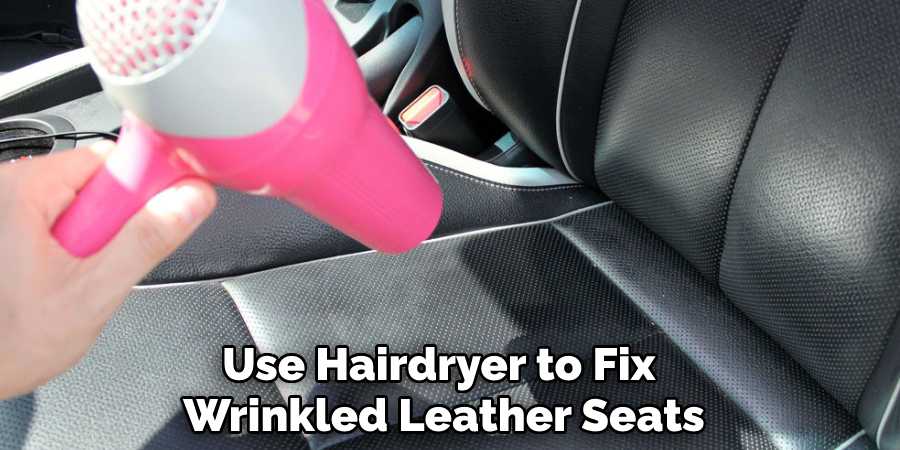
Work in small sections at a time, and use a soft cloth to wipe the cleaner off when finished. Next, you will need to apply a leather conditioner to your seat’s surface in order to restore its suppleness and elasticity. A good quality leather conditioner should be applied every six months or as needed. Allow the conditioner to soak into the leather for several minutes before wiping off any excess.
Once the leather is clean and conditioned, it is time to begin fixing the wrinkles. You will need a few supplies, such as a bucket of warm water, a sponge, a soft cloth, some rubbing alcohol, and an iron with adjustable temperature settings. Start by saturating your seat’s surface with warm water, using the sponge to move the water around, and ensuring that all of the leather is evenly wetted.
Allow the seat to air dry for at least an hour, then dab a bit of rubbing alcohol onto a soft cloth and lightly rub it into any wrinkle area. Increase the iron’s temperature setting until it is about medium-high.
10 Methods on How to Fix Wrinkled Leather Seats
1. Use a Hairdryer
If you don’t have time to let your leather seats air dry, you can use a hairdryer to speed up the process. Set the hairdryer on the lowest heat setting and hold it about six inches away from the seat. Move the hairdryer back and forth across the seat until the leather is dry to the touch.
Once the leather is dry, use a clean cloth to massage it to help smooth out any wrinkles. If the leather is still wrinkled, you may need to repeat the process several times.
2. Use a Vacuum Cleaner with a Soft Brush Attachment
If your leather seats are starting to look a bit dull, you can use a vacuum cleaner with a soft brush attachment to clean them. Gently run the vacuum over the surface of the seats, being careful not to press too hard, or you may damage the leather.
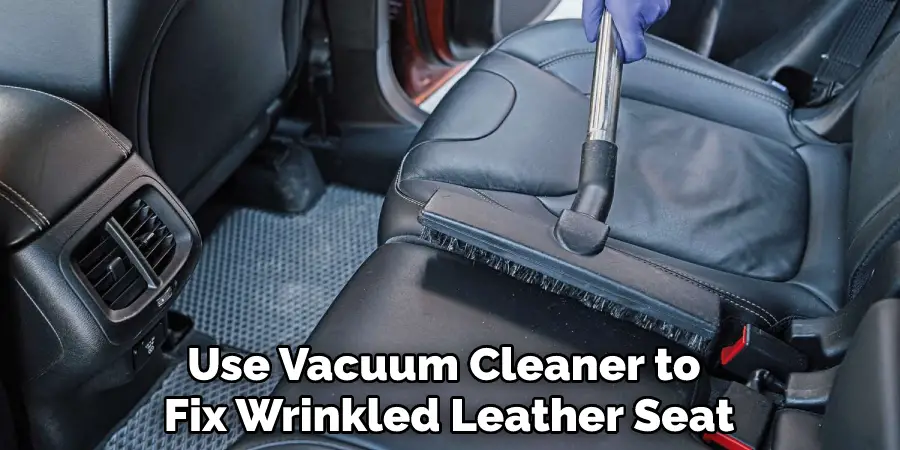
You’ll be surprised at how much dirt and dust will be collected from the vacuum, helping your leather seats look fresh again. When you’re finished, use a damp microfiber cloth to wipe away any dust or debris that may have been lifted up.
3. Wipe down with a Damp Cloth
If your leather seats are just lightly soiled, you can simply wipe them down with a damp cloth. Be sure to use a gentle cleanser that is designed for use on leather. Once you’ve wiped down the seats, be sure to dry them completely with a clean towel. This will help to prevent water spots from forming on the leather. Try to avoid soaking the leather, as this can cause it to become brittle and damaged over time.
4. Apply Saddle Soap
Saddle soap is a gentle cleanser that is designed for use on leather. To use saddle soap on your leather seats, simply wet a cloth with warm water and add a small amount of saddle soap to it. Rub the cloth over the surface of the seats, being careful not to press too hard or you may damage the leather. Once you’ve cleaned the seats, be sure to rinse off any soap residue with clean water.
5. Apply Vinegar and Water Solution
If you’re looking for a natural way to clean your leather seats, you can try using a vinegar and water solution. Simply mix equal parts vinegar and water in a bowl and apply it to the seats with a clean cloth. Be sure to rub in circles rather than back and forth, as this will help avoid damaging the leather. Once you’ve cleaned the seats, be sure to rinse them off with clean water.
6. Apply Olive Oil
Olive oil can be used to condition your leather seats and help keep them looking their best. Simply apply a small amount of olive oil to a clean cloth and rub it into the surface of the seats in circular motions. Once you’ve applied olive oil to all of the seats, allow it to soak in for at least 20 minutes before wiping off any excess with a clean towel.
7. Apply a Commercial Leather Conditioner
If you’re looking for an easy way to condition your leather seats, you can try using a commercial leather conditioner. Simply apply the conditioner according to the manufacturer’s instructions, and be sure to allow it to soak in before wiping off any excess.
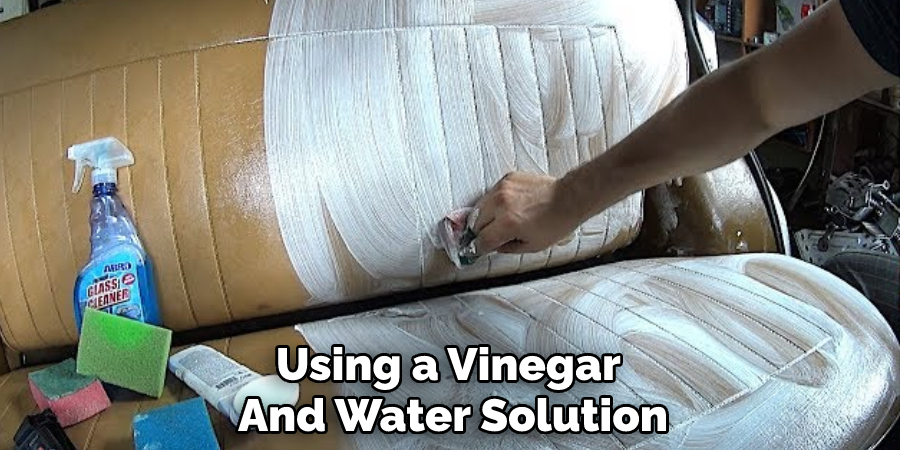
This is an effective way to keep your leather seats looking and feeling their best. Additionally, it helps protect the finish of the leather and can help prevent future wrinkles and dryness.
8. Use a Leather Cleaner
If your leather seats are particularly dirty, you may want to invest in a commercial leather cleaner. Simply apply the cleaner according to the manufacturer’s instructions and use a soft brush or cloth to work it into the surface of the seats.
Once you’ve finished cleaning, be sure to rinse off any residue with clean water. This will help to prevent the leather from becoming dry and brittle. If dirt persists, repeat the process until the leather is clean.
9. Cover with a Leather Protector
Once you’ve finished cleaning and conditioning your leather seats, you may want to invest in a commercial leather protector. This will help keep your leather in good condition, and it can also help repel stains, water, and oil. Simply apply the protector according to the manufacturer’s instructions and allow it to soak in for at least 15 minutes before wiping off any excess.
10. Re-Stretch the Leather Seats
If your leather seats are beginning to look a bit wrinkled, you may want to try re-stretching them. To do this, simply apply a small amount of heat to the wrinkles with a hairdryer.
Once the leather is warm, use your hands to gently pull it in the direction of the wrinkles and press firmly until they are smoothed out. Be sure to use caution when applying heat, as too much could cause damage to the leather. Once you’ve finished stretching the seats, allow them to cool before using them again.
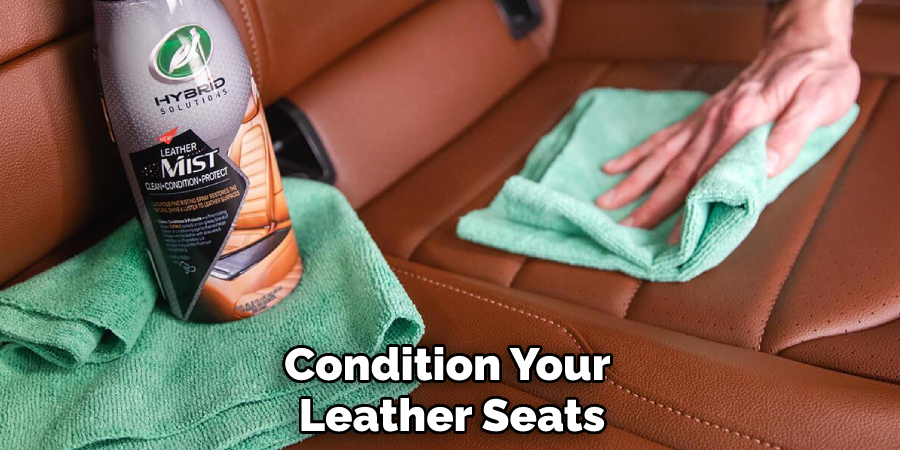
Conclusion
By following the above steps on how to fix wrinkled leather seats, you can hopefully achieve smooth, supple leather seats once again. Regular cleaning and conditioning will help to prolong the life of your leather seats and keep them looking new for years to come.
If you have any doubts or questions about how to care for your car’s leather seats, consult a professional detailer or interior cleaner. They will be able to offer additional tips and tricks specific to your car’s make and model.

